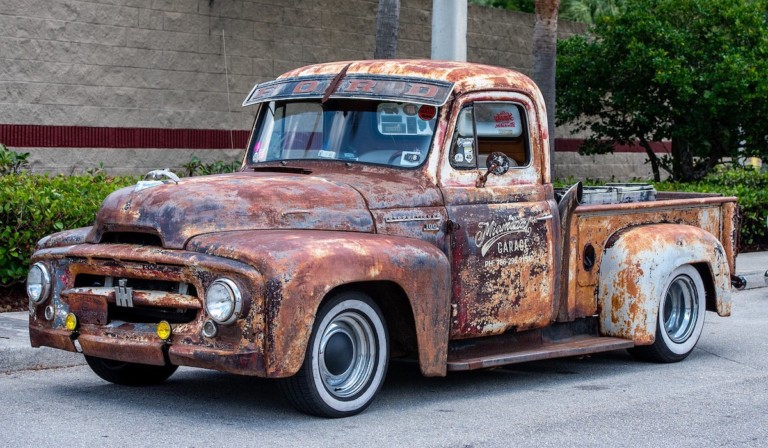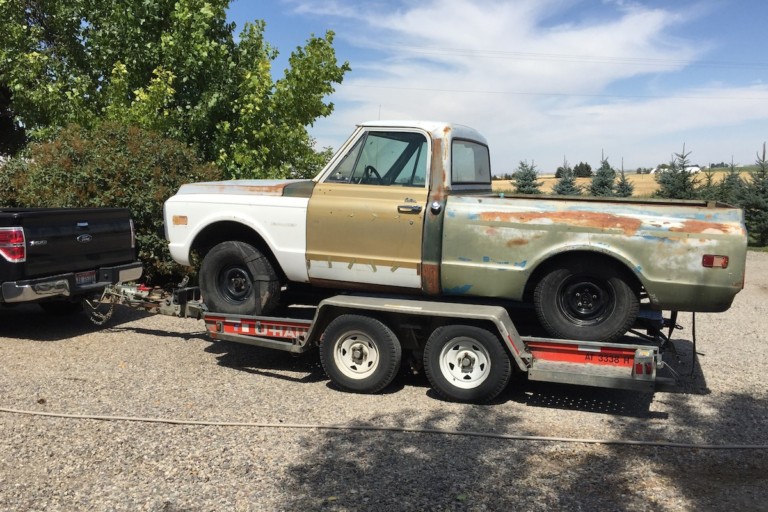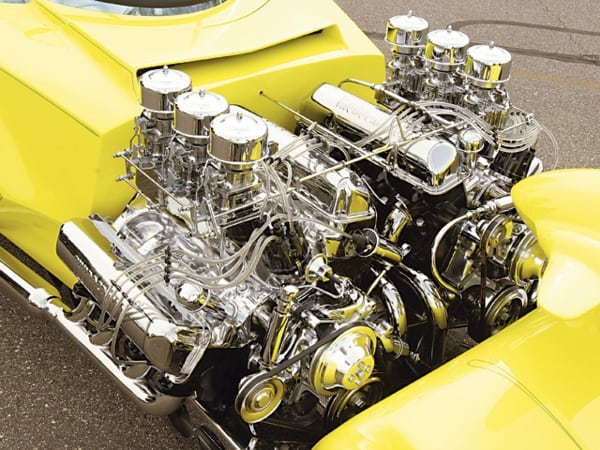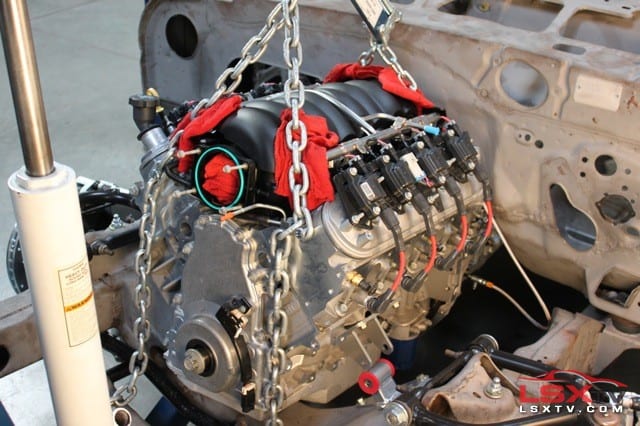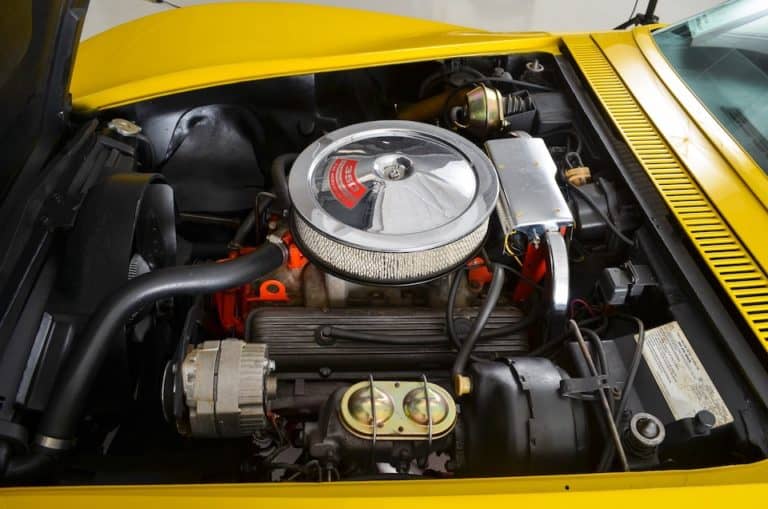3 Surefire Ways to Find the Gear Ratio In Your Truck
Knowing your gear ratio is instrumental in determining which transmission gear set is best suited for your truck. It is also important to know the ratio as well as the tire size to determine which speedometer gear you need so your speedometer reads accurately.
Here are three ways to find the gear ratio of your truck:
- The gear ratio is usually listed in the VIN code located on driver’s door, the glove box, or the ID plate on the dashboard.
- Count the times a rear wheel goes around for one driveshaft turn: if its 3 1/2 it’s a 3.50:1
- Divide the number of teeth on the ring gear by the number of teeth on the pinion gear.
Wondering what is the gear ratio in your truck? Let’s look closer at how to find out, and why it’s important.
Why Is It Important To Know Your Gear Ratio?
The final drive gear ratio is the last bit of gearing between your transmission and the wheels being driven. When you change this gearing you can drastically affect your truck’s performance.
If you change to a lower final drive ratio this will lead to less torque at the wheels but a higher top speed. Meanwhile, a higher ratio will result in the opposite, i.e. more torque at the wheels but a lower top speed.
This gear ratio helps determine how much fuel economy, torque, and towing capacity your truck will have. A vehicle with a high axle ratio like 4.10:1 will have more towing capacity than a 3.15:1 however, with the added towing capacity comes a lower top speed and lower fuel economy. A smaller axle ratio will lack torque for towing but will give increased fuel economy.
What you plan on using your truck for determines what gear ratio you need. Is your truck going to be an off road rig that will do a lot of towing or hauling? You don’t want a high speed gear ratio if you have a large camper or boat to tow.
Gear ratios are never just arbitrary values, they are highly dependent on the needed torque and power output, as well as gear and material strength.
Trevor English
If your truck is like my C10, I want it to be quick in the quarter and be able to drive 10 to 20 mile distances without over revving the engine. Mine is a 3.73:1 and I will tweak it by adjusting my tire size.

The Gear Ratio Could Be In Your VIN Code Or Identification Plate
The VIN is a 17 digit code that every automobile has to identify and track them. Every number and letter within a VIN reveals information about the automobile, such as the make, model, year built and the engine size.
Some but not all of these VIN numbers will have a code for the gear ratio of the vehicle, but that will depend largely on the information the manufacturer includes in the vehicle descriptor section (VDS) of the VIN.
Here are three easy steps to help you decipher your VIN code:
Step 1
It’s easy to find the VIN of your vehicle. It can be found on the sticker on the inside of the driver’s side door and is also stamped on a metal plate embedded in the dashboard above the steering wheel. You can also find it on your vehicle’s title.
Step 2
The VDS section is the fourth through eight digits in the VIN number. This section typically includes information such as the vehicle model, engine size and body type. Not every vehicle manufacturer includes gearbox ratios in the VDS but this is where it can be found if it was included.
Step 3
There are many places online with VIN decoder information such as Edmunds.com or the National Highway Safety Administration site. The meaning of the digits and their order of information will vary by manufacturer.
If your VIN number doesn’t include gear ratios, check in the glove box, that is where I found mine. The ratio you find on the VIN or ID tags only holds true if your truck has the original differential and gears in it.
There is always the possibility of your truck having a tag on one of the bolts holding on the differential pan. This would be really fortunate to have on a fifty year old truck but I was not that lucky with mine.
A transmission effectively transmits the input torque from the engine or motor to the wheels. It achieves this through several gear ratios which provide the precise amount of torque to the wheels to allow the vehicle to accelerate whilst remaining within the most efficient RPM range of the engine or motor.
Racecar Engineering, 2019
Count Your Wheel Turns For Gear Ratio
My truck had parts from a few different donors so I needed to dig a little deeper to verify that my tags were correct. An easy way to do this is to count how many times the wheel goes around per drive shaft turn. Here are some simple steps to follow:
- Block your front tires to keep them from moving.
- Jack the back of the truck up so that the back tires clear the ground.
- With the vehicle off the ground place it in neutral.
- Put a mark on the driveshaft where you can see it from a safe area.
- As you rotate the rear wheel towards the car front count how many times the driveshaft turns per one complete wheel revolution. This will give you your ratio.
Here are a few examples of gear ratios:
- 2 ¾ rotations = 2.73 gears
- Just past 3 rotations = 3.08 gears
- 3 ¼ rotations = 3.27 gears
- 3 ½ rotations = 3.55 gears
- 3 ¾ rotations = 3.73 gears
- Just under 4 rotations = 3.90 gears
- Just past 4 rotations = 4.10 gears

Dividing the Ring And Pinion Teeth to Find Gear Ratio
If you are still not assured of your gear ratio there is another way to check that is 100% accurate. To calculate your gear ratio you will need to remove the differential cover and count the number of teeth on the ring gear and the pinion gear. Divide the number of teeth on the ring gear by the number of teeth on the pinion in order to determine the gear ratio of a truck.
Transmissions are some of the best examples of the practical applications of gear ratios. Anyone who has ridden in a car or other motorized vehicle has benefited from transmissions in some form. And every transmission is essentially just a bunch of gears and gear ratios packed closely together.
Trevor English
Final Thoughts
Now we know how to determine what our gear ratios are and also why we need different ratios. I did all three of these checks on my truck as I wanted to know exactly what I have. Mine turned out to be a non posi-traction 3.73:1 which is fine but soon I will change change it to posi-traction.
Related Topics
What type of paint should I use on an engine? When applied and cured properly, enamel paints will resist chipping while resisting rust and corrosion. Enamels are simple to apply using brushes, rollers or spray guns. Enamels are also heat resistant and will hold up under extremely high temperatures.
Sources: interestingengineering.com
Racecar Engineering, 2019
